In this episode, Becky reprises her role as an art gallery owner…kinda…and Diana acts as the art critic…sorta…as Becky does a remote showing of the most haunted paintings that ever existed.
Remember when we did the episode about the haunted portrait? This is kind of like that, except with famous haunted portraits.
Listen now, and scroll down very slowly.
The Anguished Man
The current owner of this painting inherited it from a grandmother. Nobody knows the artist’s name. We do know that it contains the artist’s own blood. Also that the artist killed himself after painting it. The current owner hears the painting crying and moaning. There’s also a mysterious figure wandering the owner’s house since he’s owned it. You can find more details from the owner here.
Are you ready for this? Why am I asking? Nobody could be ready for this. Here you go.
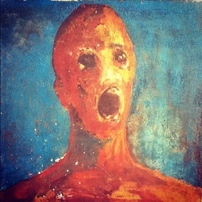
The Little Boy With Cankles
Kidding, kidding! It’s actually called The Hands Resist Him. It’s on display at Perception Gallery in Grand Rapids, MI. The artist says the painting is about his adoption, and the lives that could’ve been his had he not been adopted. He also admits he may have been channeling something through his subconscious while painting it.
Oh, and don’t be offended by our cankle jokes. We have cankles ourselves, that we used to be self-conscious about, that we’ve since learned to embrace, or at least not include in our self portraits. This boy is likely just wearing thick cozy socks. Either way, Diana liked this one.
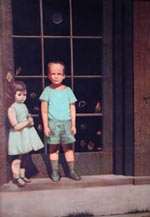
The Crying Boy
The mass produced painting hung in many households in midcentury England. Legend has it that if you purchase even a print of this painting, your house may burn down, but don’t worry, because the painting would be just fine.
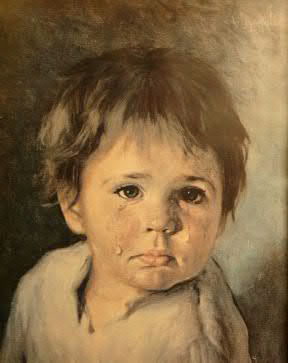
John Wayne Gacy’s Painting of Pogo the Clown
Seeing Gacy’s artwork in person turned Becky’s stomach (which is her common reaction to hauntings) and her husband’s (which is not common). We recently watched a pretty good interview with Gacy’s sister and niece, about the other face he showed to his family. It’s wild how little you ever actually know someone else.
Zak Bagans owns the painting now, so if you’d like to see it it’s probably in his museum of haunted objects. For copyright purposes, let’s just say it looks very much like this Pogo doll which Chloe Manon holds in the photo below. Y’all remember Chloe? She’s the wife of the owner of much of Gacy’s artwork, housed within the Graveface Museum of sideshow oddities and serial killer memorabilia.
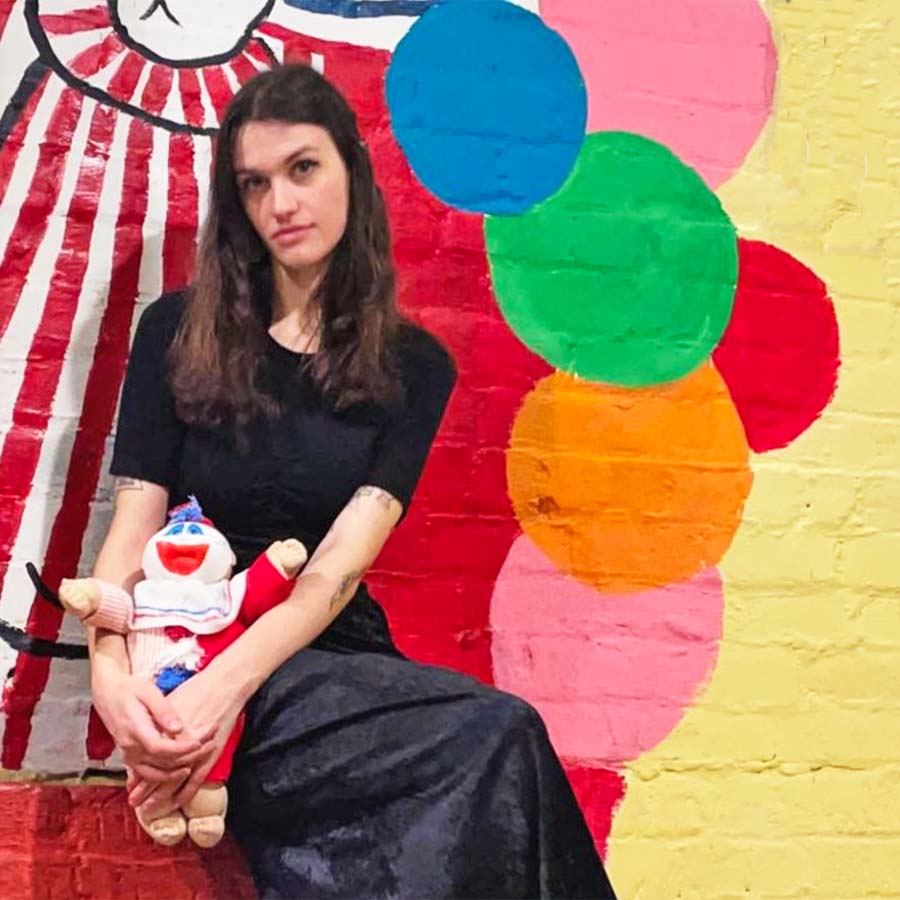
Death and the Child
Edvard Munch painted this version of this disturbing image 1889. There are 3 versions. The one that Becky got to see in Oslo, Norway, made her children run away screaming. As a boy, Munch’s father would apparently tell him that, even in heaven, his dead mother was disappointed in his bad behavior. No wonder the kid in the painting is covering her ears. The haunting: the girl leaves the canvas sometimes. Occasionally, you’ll hear the bedsheets over the corpse rustling.
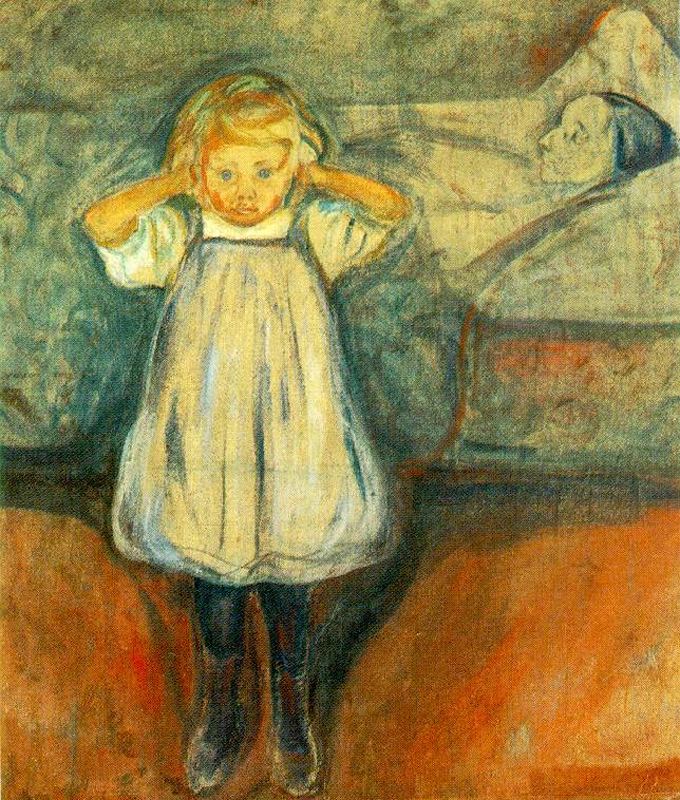
Portrait of Bernardo de Gálvez
Portrait of the count of Galvez, on display in Galvaston, TX. (Get it? Galvez-town?). This one isn’t that creepy at first glance. But if you don’t ask permission before taking the photo, it will come out ruined. If photographed with a flash, a skull appears over the subject’s face. The subject’s eyes also follow you.
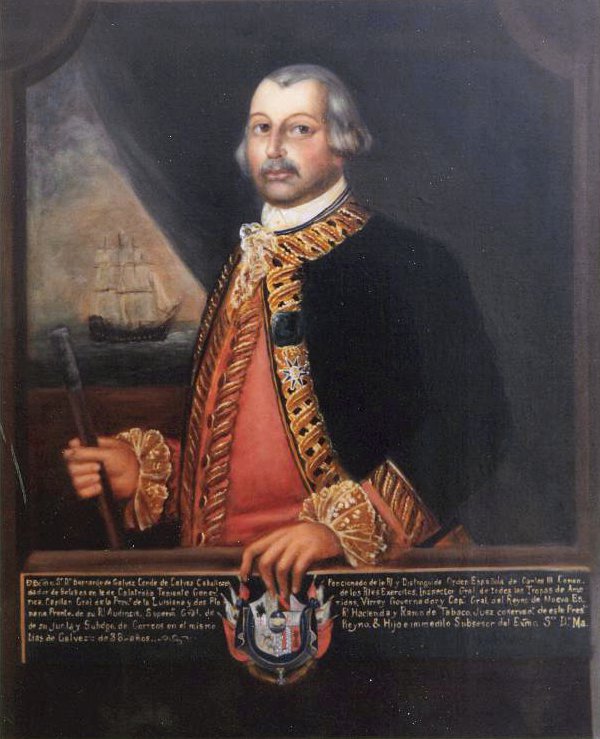
Can a painting be haunted?
After subjecting Diana to these horrifying paintings, Becky espouses her very logical grand unified theory of why haunted paintings feel haunted, why they really are haunted, and which specific features of haunted portraits actually have mundane explanations.
But what do you think, Hainted Loves? Have you seen any of these portraits in person, and if so, are you now feeling more haunted than you were before? Have you ever painted a cursed painting? Tell us about it on the show, by submitting it here. And just in case you’re in Tokyo, Becky recommended this haunted art exhibition for children. The whole family can have a spooky day!
